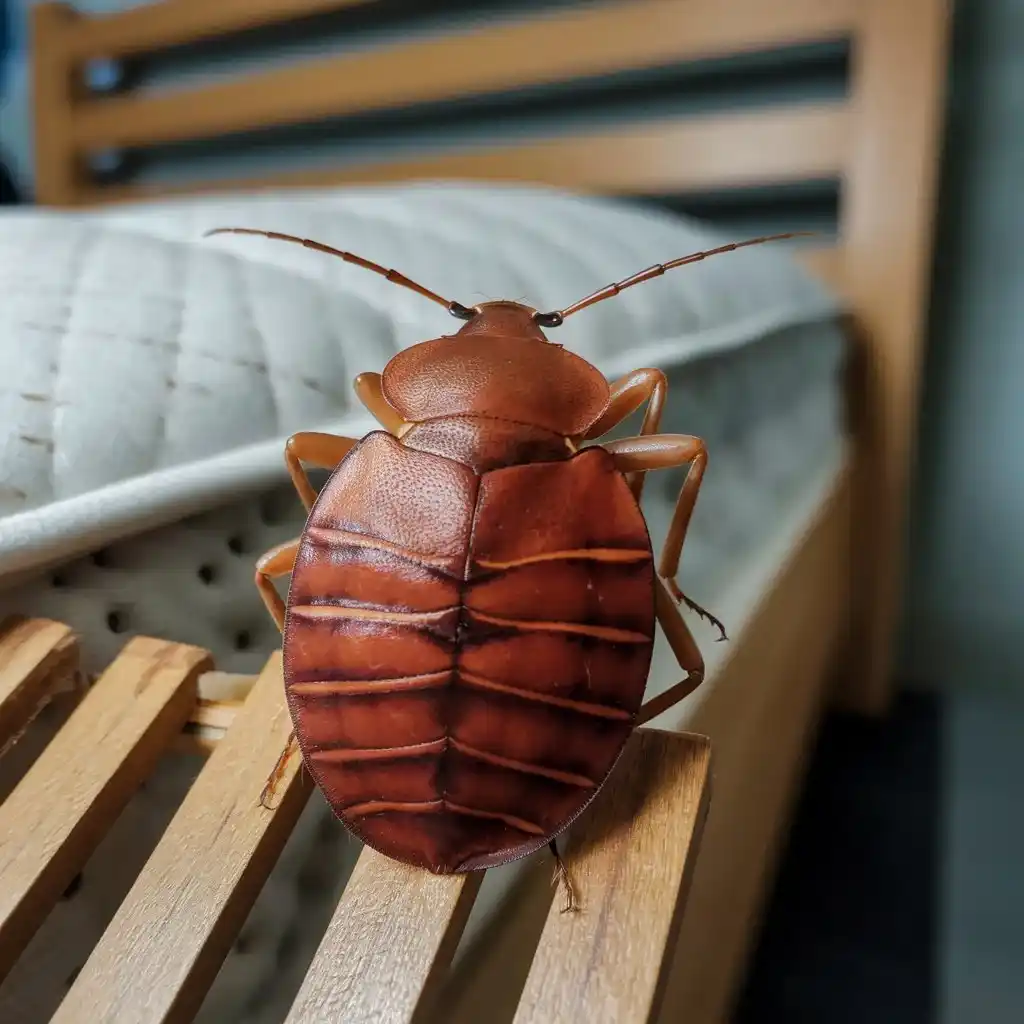Not All Bugs Are Bed gs
When you see tiny, reddish-brown insects crawling around your home, your immediate thought might be that you’re dealing with bed bugs. However, several types of bugs resemble bed bugs but are entirely different pests. Furthermore, knowing the difference is essential to ensure that the correct treatment and pest control methods are used. Ultimately, identifying bugs that look like bed bugs can save you time, money, and stress.
In this article, we’ll dive into the most common bugs that resemble bed bugs, how to differentiate them, and practical steps you can take to control these pests in your home.
Understanding Bed Bugs
What Are Bed Bugs?
Bed bugs (Cimex lectularius) are small, flat, oval-shaped insects that feed on the blood of humans and animals for survival.They are brownish-red and commonly hide in places like mattresses, bed frames, furniture, and small crevices throughout the home. Bed bugs are active mostly at night, emerging to feed on their sleeping hosts. Their bites often lead to itchy red welts, causing discomfort.
Common Signs of Bed Bugs:
- Reddish spots on bedding: These may appear from squashed bed bugs.
- Dark spots of excrement: Usually found on mattresses or bed sheets.
- Shed skins and eggshells: As bed bugs grow, they shed their skins.
- A musty odor: Heavy infestations produce a distinctive smell.
Bugs That Look Like Bed Bugs
Identifying bed bugs can be tricky, especially because other pests resemble them. Let’s explore some of these look-alike bugs.
Bat Bugs
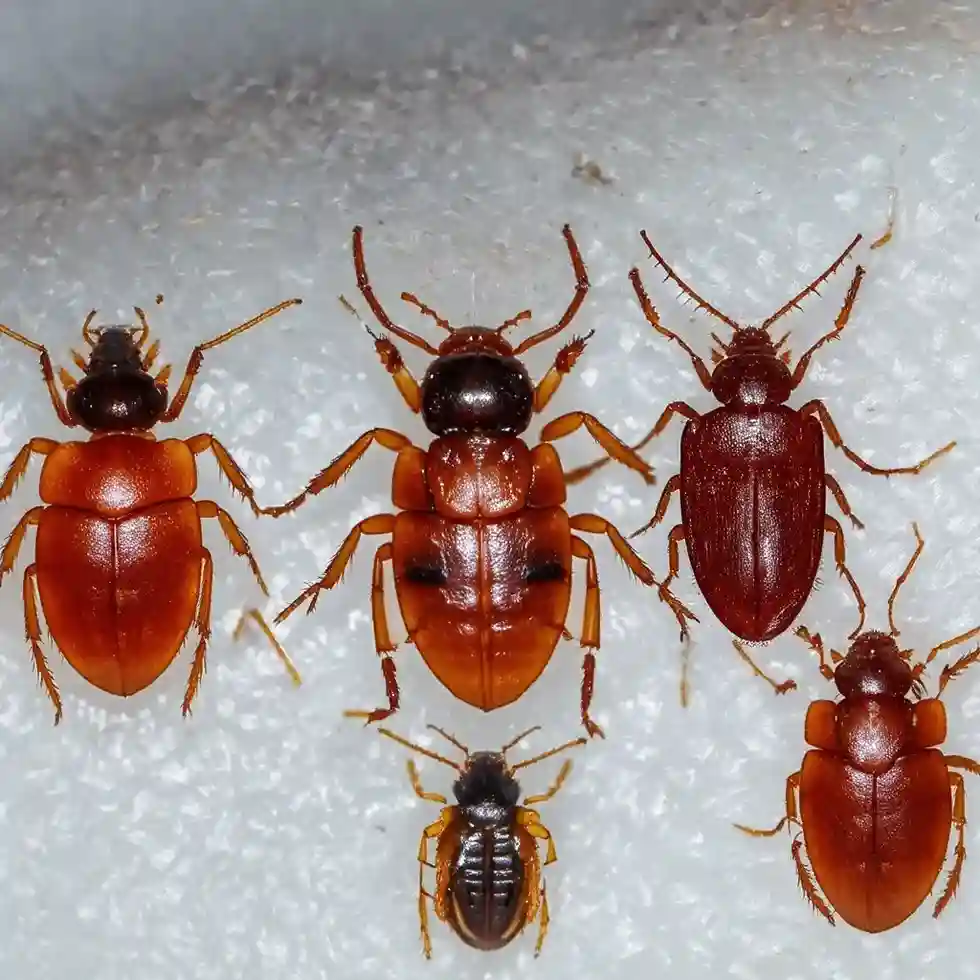
Bat bugs closely resemble bed bugs.However, bat bugs have longer hairs on their heads compared to bed bugs.
- Habitat: Found in areas such as attics. If bats are removed, the bugs may start feeding on humans.
- Treatment: Removing the bats from your home and sealing entry points is essential. Afterward, you can vacuum the affected areas and apply insecticides to eliminate the bugs.
Spider Beetles
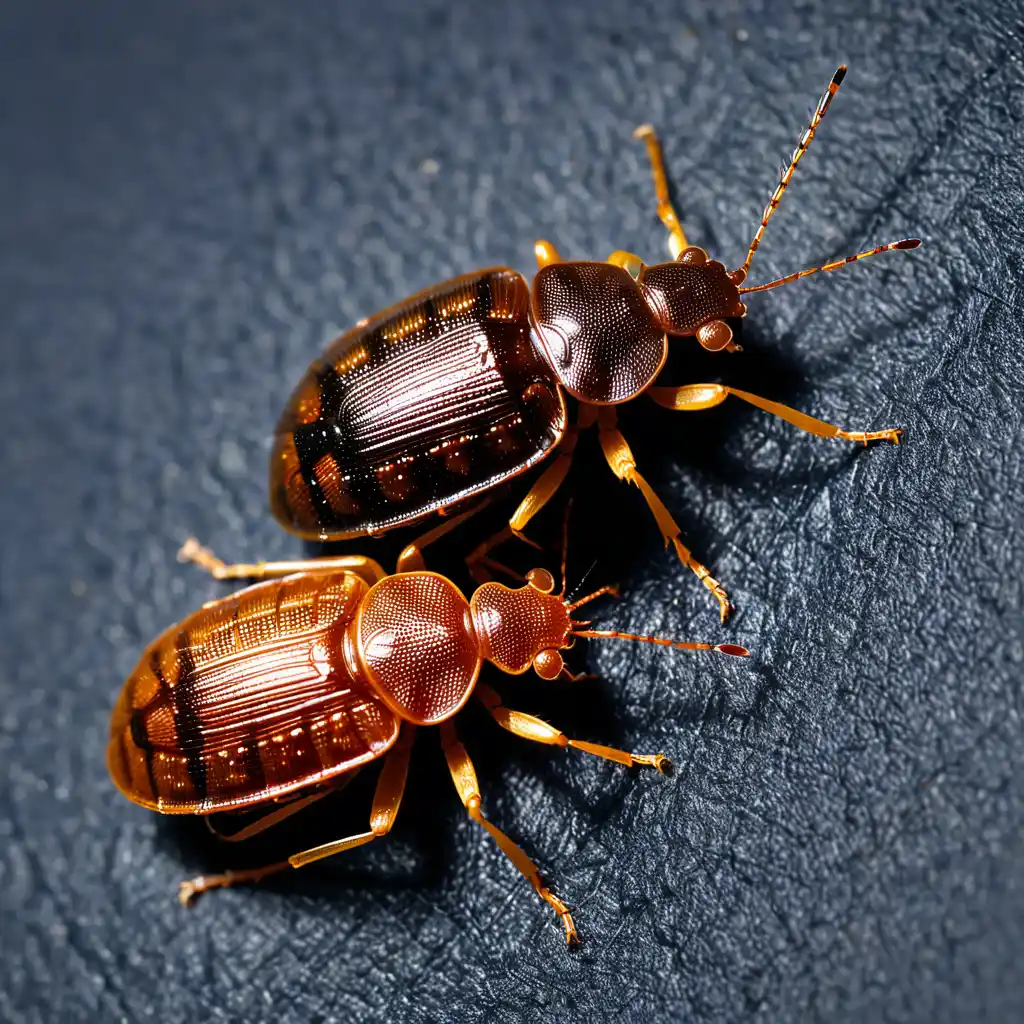
Spider beetles are tiny, round, reddish-brown insects that resemble bed bugs in shape but are much shinier. Furthermore, unlike bed bugs, they do not bite humans.
- Habitat: These pests are commonly found in pantries, feeding on grains, dried fruits, and other stored food products.
- Treatment: Discard infested food, clean your pantry thoroughly, and use insecticides to eliminate spider beetles.
Booklice
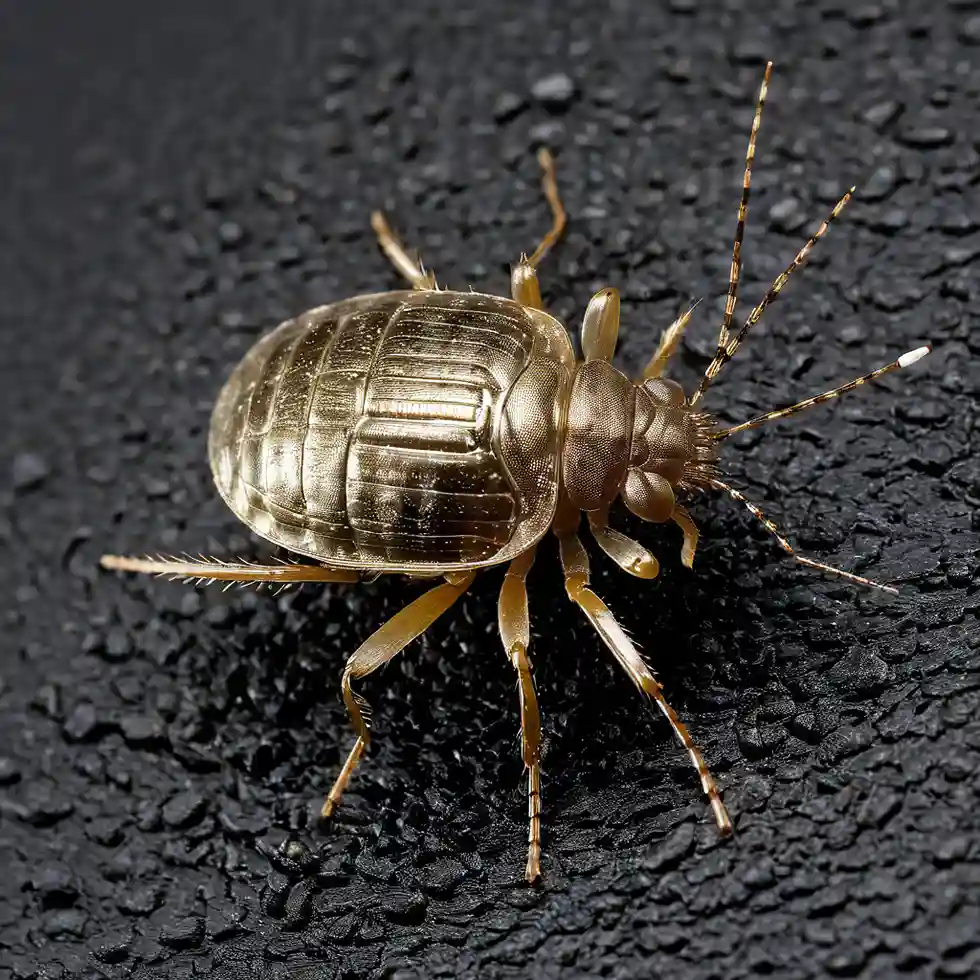
Booklice, or psocids, are small, pale insects often confused with bed bug nymphs. They are much smaller and prefer humid environments.
- Habitat: Found in basements, kitchens, or areas with mold and mildew.
- Treatment: Reducing humidity and cleaning infested areas can help get rid of booklice.
Carpet Beetles
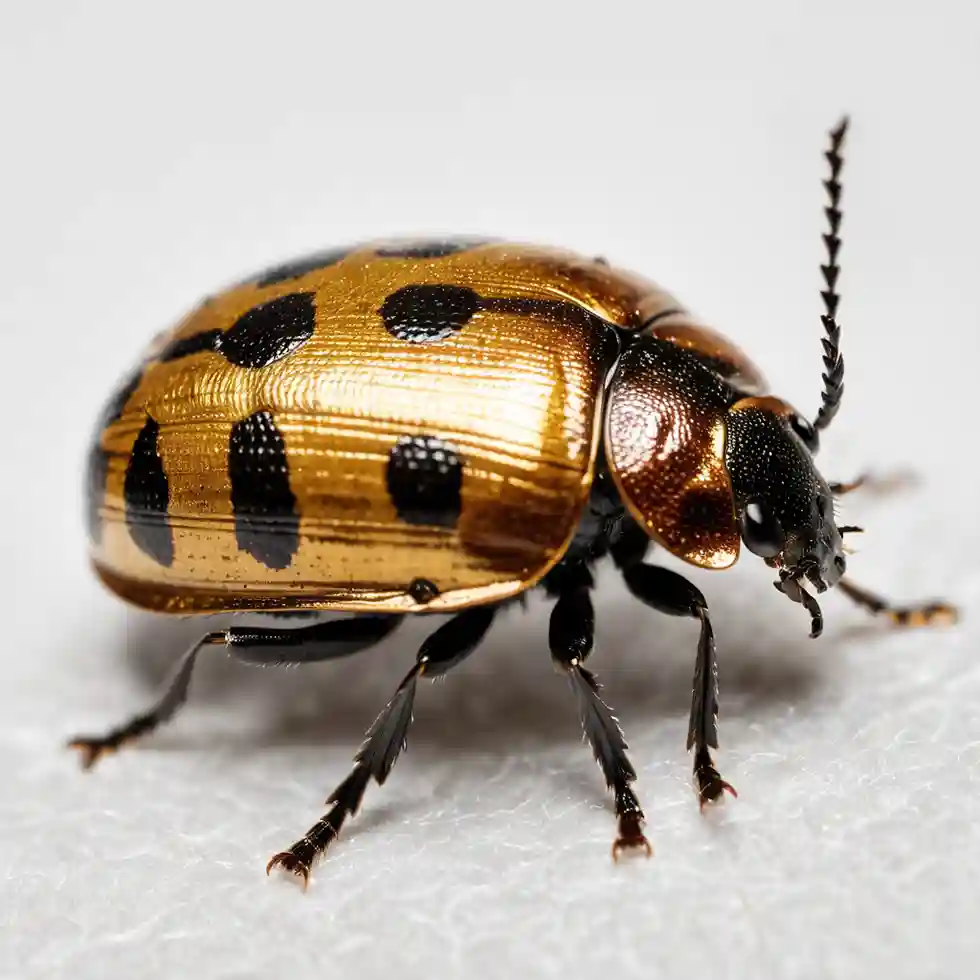
Carpet beetles are oval-shaped insects that can be mistaken for bed bugs due to their size and color. However, carpet beetles have tiny hairs on their bodies, unlike bed bugs.
- Habitat: They are found in carpets, fabrics, and upholstery. Carpet beetles feed on natural fibers rather than blood.
- Treatment: Regular vacuuming, cleaning fabrics, and applying insecticides to affected areas will help control carpet beetles.
Fleas
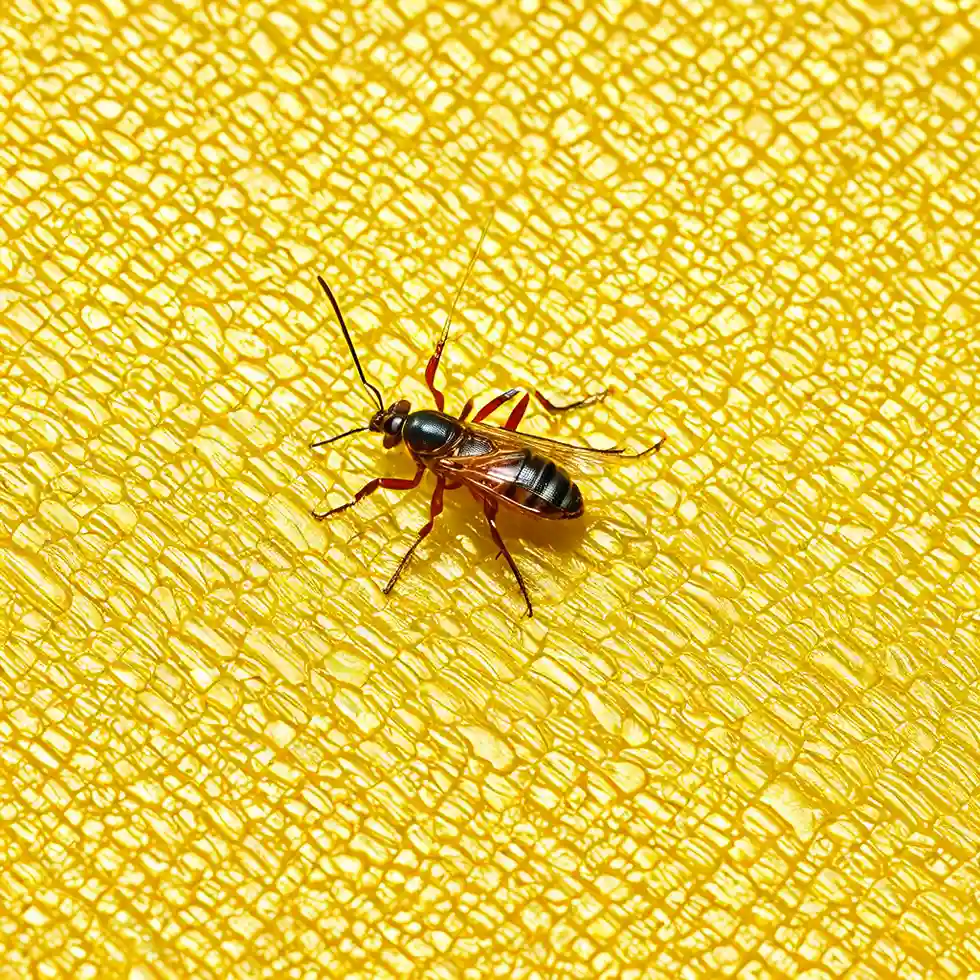
Fleas, often mistaken for bed bugs due to their size and color, are another common pest. Moreover, unlike bed bugs, fleas can jump and typically bite ankles and legs.
- Habitat: Fleas are often found on pets, in pet bedding, or around the home where animals reside.
- Treatment: Treat your pets with flea medications, vacuum carpets and furniture, and use flea sprays or insecticides.
Cockroach Nymphs
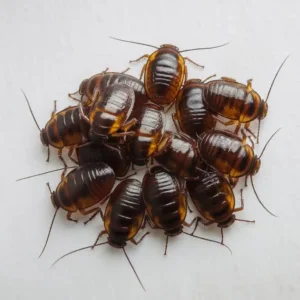
Cockroach nymphs, similar in size and shape to bed bugs, are distinguished by their more oval form and lighter brown color; bed bugs are typically reddish-brown.
- Habitat: Cockroach nymphs thrive in kitchens and bathrooms, hiding in dark, damp places.
- Treatment: Use cockroach baits and insecticides to control cockroach populations in your home.
Ticks
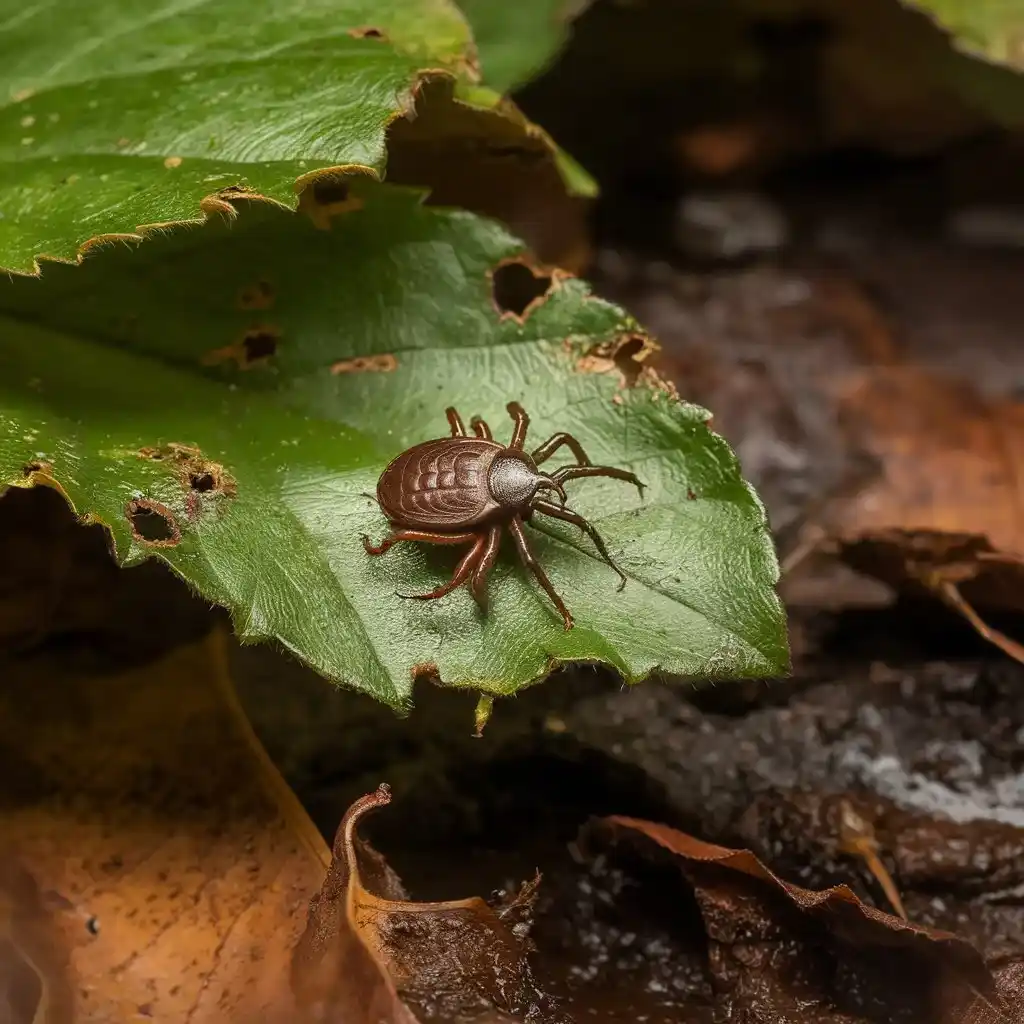
Ticks are another pest that closely resembles bed bugs. Similarly, they are flat and round with a reddish-brown color, but unlike bed bugs, ticks latch onto the skin to feed.
- Habitat: Ticks are commonly found on pets and humans after outdoor activities in grassy areas.
- Treatment: Check for ticks after outdoor activities, treat pets for ticks, and use tick repellent when necessary.
head Lice
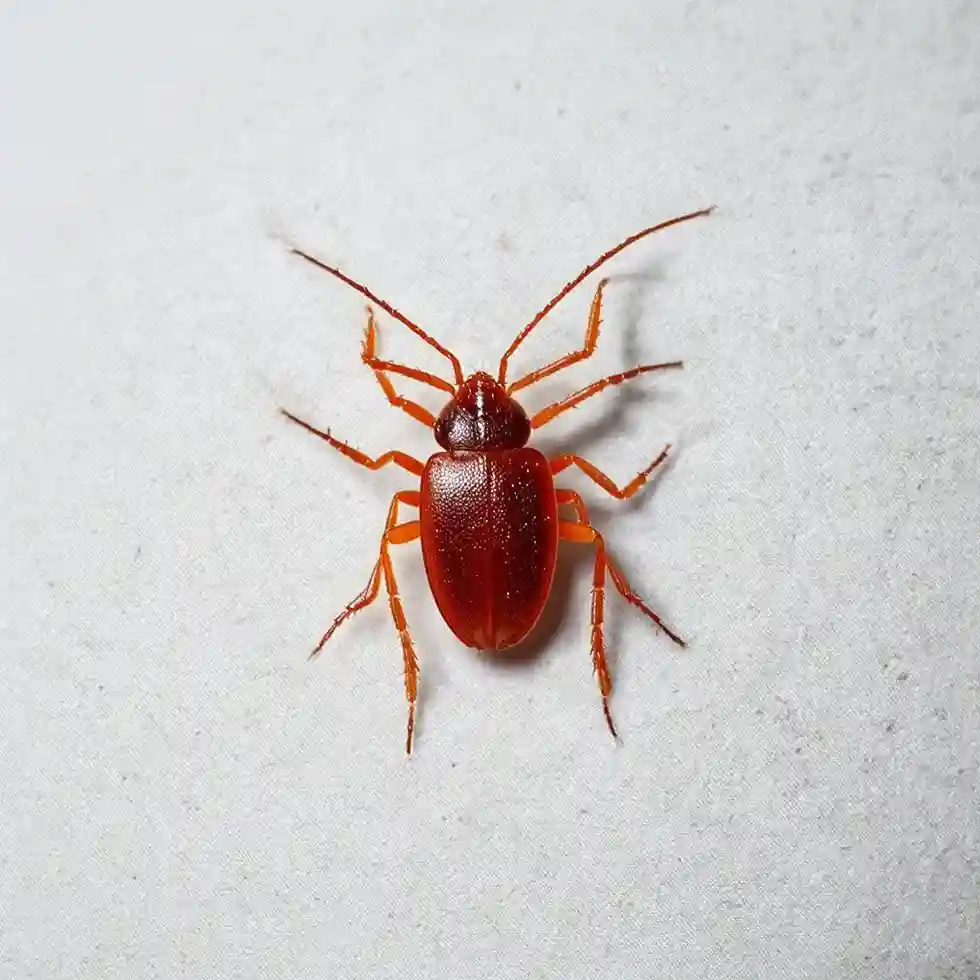
Head lice,are longer and thinner.They live on human scalps, where they bite and feed on blood.
- Habitat: Lice infestations occur on the head and hair, not in furniture or bedding.
- Treatment: Use over-the-counter lice shampoos, comb out the eggs, and wash all clothing and bedding in hot water.
How to Differentiate Between Bed Bugs and Other Pests
Correctly identifying pests is crucial for effective control. Here’s how to differentiate bed bugs from their look-alikes:
Physical Differences
- Bed Bugs: Oval, flat, reddish-brown, about the size of an apple seed.
- Bat Bugs: Nearly identical to bed bugs, but typically found near bats.
- Spider Beetles: Shiny, round, and smaller than bed bugs.
- Booklice: Tiny, pale insects found in humid areas.
- Carpet Beetles: Oval and hairy, often found in carpets or fabrics.
Behavioral Differences
- Biting Habits: Bed bugs bite at night, leaving itchy, red welts.In contrast,fleas,ticks,and lice also bite but exhibit different patterns and behaviors.
- Nesting Habits: Unlike bed bugs, which hide in mattresses and furniture, other pests like carpet beetles or booklice prefer fabrics or humid areas.
DIY Pest Control Methods for Bed Bugs and Look-Alikes
If you’re dealing with bed bugs or similar-looking pests, you can first try these DIY pest control methods. Alternatively, you may call in a professional if the problem persists.
Bed Bug Treatment Options
- Heat Treatment: Wash and dry all infested bedding, clothes, and fabrics at high heat.
- Vacuuming: Regularly vacuum your home to remove bed bugs, eggs, and other debris.
- Encasements: Use bed bug-proof covers on your mattresses and box springs to prevent further infestations.
- Insecticides: Use specially formulated insecticides that target bed bugs for areas you can’t reach.
Controlling Other Bugs That Look Like Bed Bugs
- Bat Bugs: Eliminate bats and seal entry points to prevent bat bugs from entering your home.
- Fleas: Treat pets with flea medications, vacuum thoroughly, and apply insecticides.
- Carpet Beetles: Clean affected areas and vacuum regularly to prevent an infestation.
- Booklice: Reduce humidity levels and keep your home dry to eliminate booklice.
Prevention Tips to Keep Your Home Pest-Free
Maintaining a pest-free home is crucial after eliminating bed bugs or similar infestations. Here are some preventive measures you can take:
Regular Inspections
Inspect your bedding, furniture, and carpets regularly for signs of bed bugs or other pests. Furthermore, look for physical signs like bites, stains, shed skins, and droppings.
Cleanliness Is Key
- Keep your home clean and vacuum frequently to prevent infestations.
- Pay special attention to high-traffic areas and cracks where pests might hide.
Seal Entry Points
- Use caulking and weather stripping to seal any cracks or gaps around windows, doors, and walls.
- Repair damaged screens on windows and doors to keep pests from entering.
Manage Humidity Levels
To prevent pests like booklice, utilize a dehumidifier to reduce humidity levels in your home, particularly in areas such as basements and kitchens.
When to Call a Professional :
Severe or widespread pest infestations often require professional help.
- Severe Infestations: If you find evidence of multiple pests or large infestations, it’s time to call a professional.
- Health Risks: Fleas, bed bugs, ticks, and cockroaches can carry diseases or cause allergic reactions. A professional exterminator can ensure safe, thorough removal.
Conclusion: Don’t Be Fooled by Look-Alike Bugs
Dealing with bugs that resemble bed bugs can be frustrating; however, with the right information, you can swiftly identify and control these pests. For instance, whether it’s bat bugs, carpet beetles, or fleas, recognizing the differences helps you take the appropriate steps for treatment. Additionally, keeping your home clean, sealing entry points, and staying vigilant for signs of infestations are crucial for maintaining a pest-free environment. Moreover, reducing humidity and regular inspections play a key role in prevention. Finally, taking these measures can help you effectively manage pest issues and maintain a healthy home.
FAQs
Q1: What are bed bugs?
A1: Bed bugs are small, oval-shaped insects that feed on human and animal blood. They are reddish-brown and usually found in mattresses, bed frames, and furniture. Moreover, they bite at night, leaving itchy red welts.
Q2: How can I tell if I have bed bugs?
A2: You may notice reddish spots on your bedding, dark spots of excrement, and shed skins. Additionally, a musty odor can be a sign of a severe infestation.
Q3: What bugs look like bed bugs?
A3: Bugs like bat bugs, spider beetles, booklice, carpet beetles, fleas, and cockroach nymphs resemble bed bugs. However, each of these pests has unique characteristics that set them apart.
Q4: How do I differentiate bed bugs from other pests?
A4: Bed bugs are oval, reddish-brown, but bat bugs have longer hairs on their heads. Similarly, spider beetles are shinier and booklice are pale and prefer humid areas. In contrast, carpet beetles are hairy while fleas can jump.
Q5: What are some DIY methods for controlling bed bugs?
A5: Heat treatment, vacuuming, and using bed bug-proof encasements can help. Also, insecticides are useful for areas you can’t reach. However, if the infestation persists, it’s best to call a professional. Finally, always maintain cleanliness to prevent future infestations.

